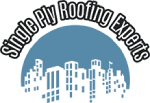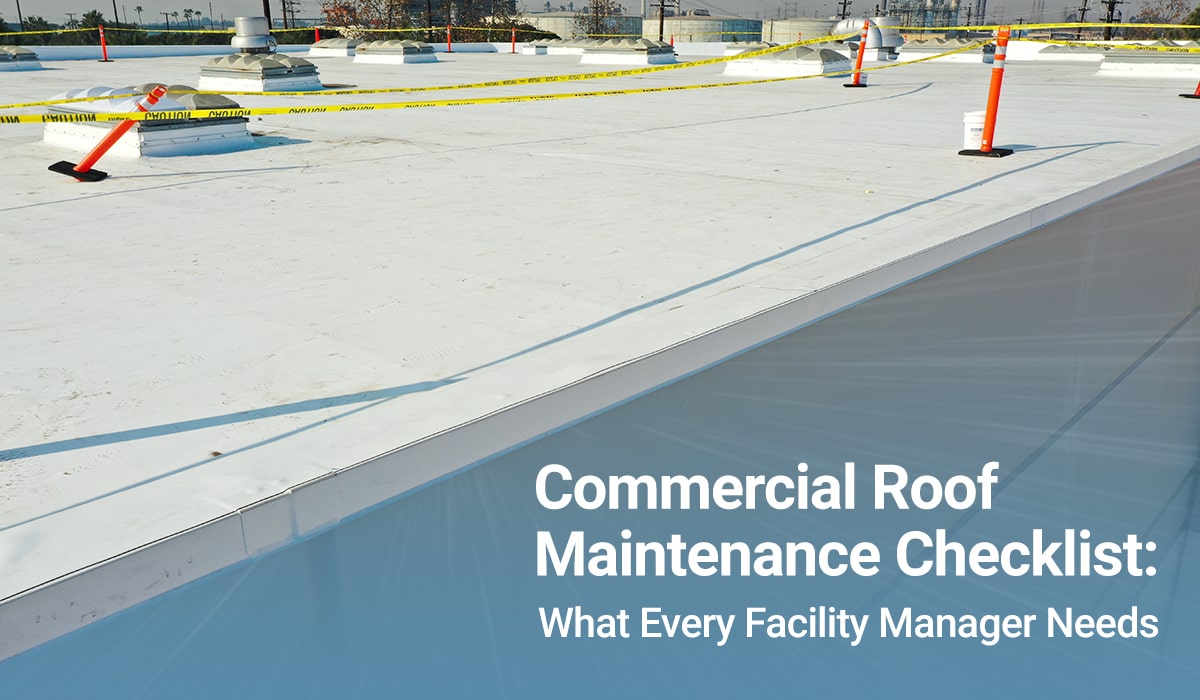Owning or managing a commercial property means ensuring everything, including the roof, is in prime condition. Proper commercial roof preventative maintenance is vital to extend the lifespan of your roof and avoid costly repairs. A well-maintained roof is an investment that protects your property and reduces operational costs. Whether you’re a facility manager or business owner, you need a solid commercial roof maintenance plan in place.
In this blog post, we will explore a commercial roof maintenance checklist, discuss the benefits of commercial roof maintenance programs, and provide guidance on when to schedule inspections. You’ll be equipped to maintain your roof properly and prevent unexpected expenses related to commercial roof repairs.
Why Is Commercial Roof Maintenance Important?
A commercial roof is one of the most significant investments for a building. Commercial roof maintenance is necessary for maintaining the integrity of the structure and preventing further issues. Neglecting your roof can lead to leaks, insulation problems, or more severe structural damage. Here are some key reasons to stay on top of your commercial roof maintenance plan:
- Prevents Costly Repairs: Regular inspections allow you to address small issues before they become major, expensive problems.
- Extends Roof Life: Proper maintenance can help you get the most out of your roof, extending its lifespan.
- Energy Efficiency: Well-maintained roofs contribute to better energy efficiency by optimizing insulation and minimizing heat loss or gain.
- Avoids Safety Hazards: Regular checks help avoid safety risks like weakened structural components or falling debris.
- Reduces Emergency Repair Costs: Following a commercial roof maintenance program means fewer emergency repairs, which can be costly and disruptive.
Commercial Roof Maintenance Checklist: What to Include
To ensure your roof remains in top condition, it’s important to follow a commercial roof maintenance checklist regularly. Here’s a comprehensive guide to what should be included in your roof maintenance routine.
1. Visual Inspection
Start with a basic visual inspection. Regularly walk around the roof to identify any visible damage. Pay special attention to:
- Cracks or Punctures: Look for cracks or punctures in the roof membrane. These could lead to leaks if not addressed quickly.
- Debris: Ensure the roof surface is clear of leaves, branches, or other debris that could obstruct drainage.
- Blisters or Bubbles: These indicate trapped moisture under the roof membrane, which could eventually lead to leaks or further damage.
- Pooling Water: Check for areas where water collects and doesn’t drain. Ponding water can quickly lead to roof deterioration and leaks.
Perform this inspection at least every three months as part of your commercial roof preventative maintenance checklist.
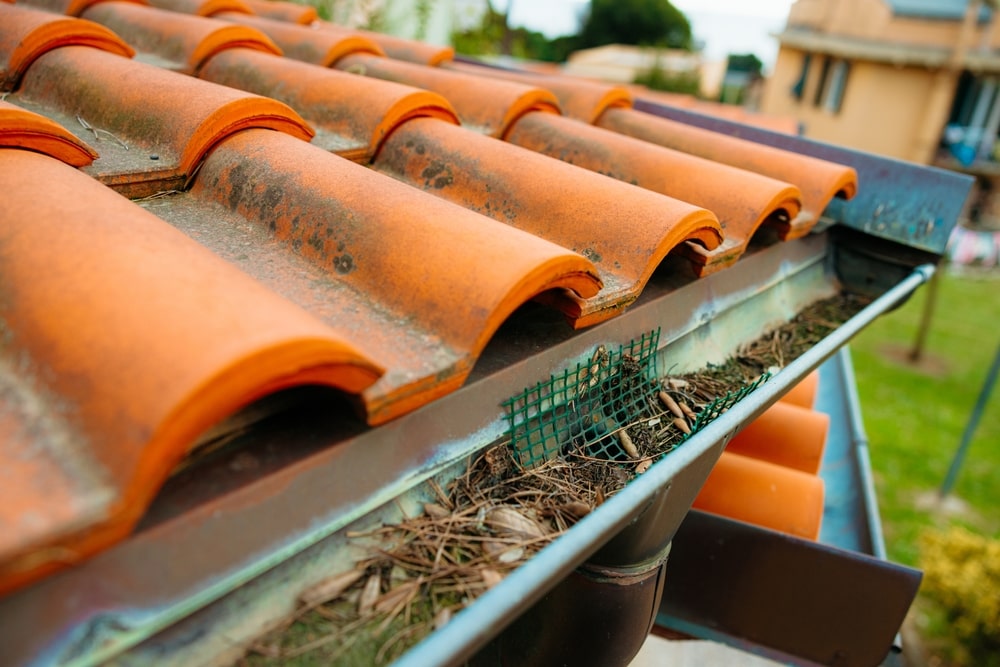
2. Gutter and Downspout Cleaning
A clean drainage system is vital for the overall health of your roof. Clogged gutters and downspouts can lead to water accumulation, increasing the risk of leaks and structural damage. Here’s what to do:
- Clean Gutters: Remove leaves, twigs, and other debris that may be obstructing the flow of water.
- Inspect for Blockages: Make sure the gutters and downspouts are not blocked and are directing water properly.
- Check for Damage: Look for any signs of damage, like rust or bending, which may require repairs or replacements.
This step is essential for your commercial roof maintenance plan and should be done at least twice a year or more frequently depending on the local climate.
3. Roof Coatings and Seals
Roof coatings and seals offer extra protection against weathering and leaks. Over time, these coatings can deteriorate, leaving your roof exposed to the elements. Here’s how to keep your roof sealed:
- Inspect Seals: Check the seals around roof penetrations (like vents, HVAC units, and skylights) for cracks or wear.
- Reapply Coatings: If your roof has a protective coating, check for wear and reapply as necessary to protect against UV rays and water damage.
- Repair Cracks: Address any cracks in the roof membrane as soon as you spot them to prevent leaks and water infiltration.
This step should be included in your commercial roof preventative maintenance checklist and performed annually or as needed.
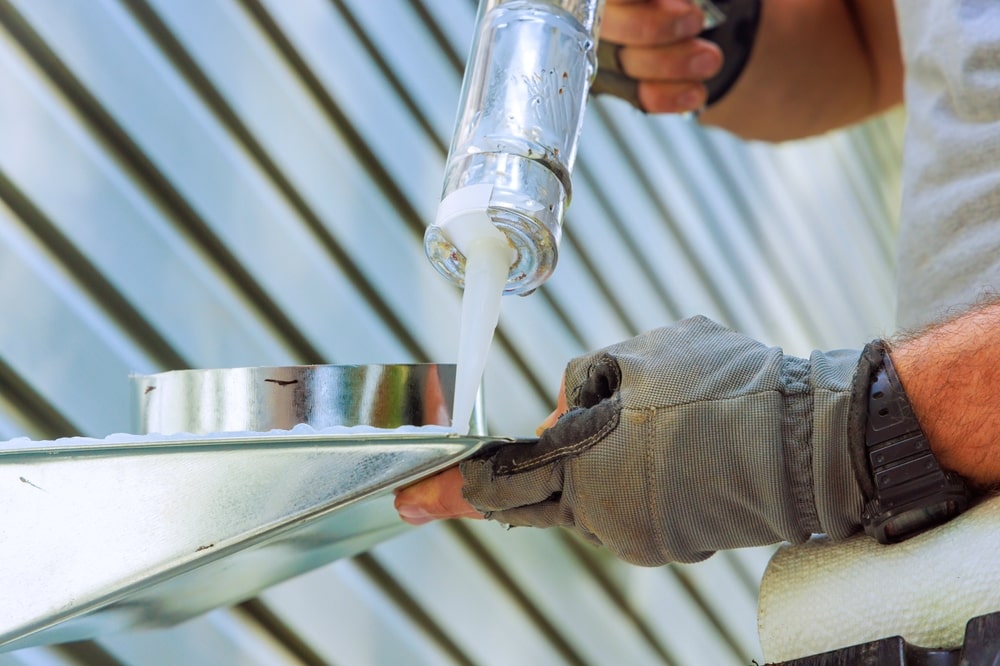
4. Flashing Inspection
Flashings are crucial for sealing roof joints, especially around chimneys, vents, and skylights. If the flashing becomes damaged or loose, water can seep into the building. Here’s what to look for:
- Check for Gaps: Look for any gaps or openings where flashing may be improperly sealed.
- Inspect for Rust or Corrosion: Metal flashings can rust over time. Replace any corroded sections immediately to prevent water damage.
- Ensure Proper Alignment: Make sure that flashing is correctly aligned and tightly secured around all penetrations.
Flashing inspections are an essential part of your commercial roof maintenance programs and should be done regularly, particularly after severe weather events.
5. Insulation and Ventilation Check
Proper insulation and ventilation ensure that your roof remains energy-efficient and free from moisture damage. This is especially critical in commercial or industrial buildings:
- Check Insulation: Inspect insulation for any signs of damage or wear. Damaged insulation can affect the overall energy efficiency of your building and lead to moisture buildup.
- Examine Ventilation: Ensure that your roof is properly ventilated to prevent heat buildup or moisture accumulation.
Including these checks in your commercial roof maintenance plan will help prevent energy inefficiencies and water-related issues.
6. Roof Drainage System Check
Ensuring that your roof drainage system is functioning properly is essential for preventing leaks and water damage. Here’s what you need to check:
- Clear Drains: Remove any debris or blockages that could prevent water from draining properly.
- Inspect Drainpipes: Check for any leaks or signs of deterioration in the drainpipes.
- Ensure Proper Slope: Make sure that the roof has an adequate slope to direct water toward the drains.
This is a crucial part of your industrial roof maintenance routine and should be checked regularly.
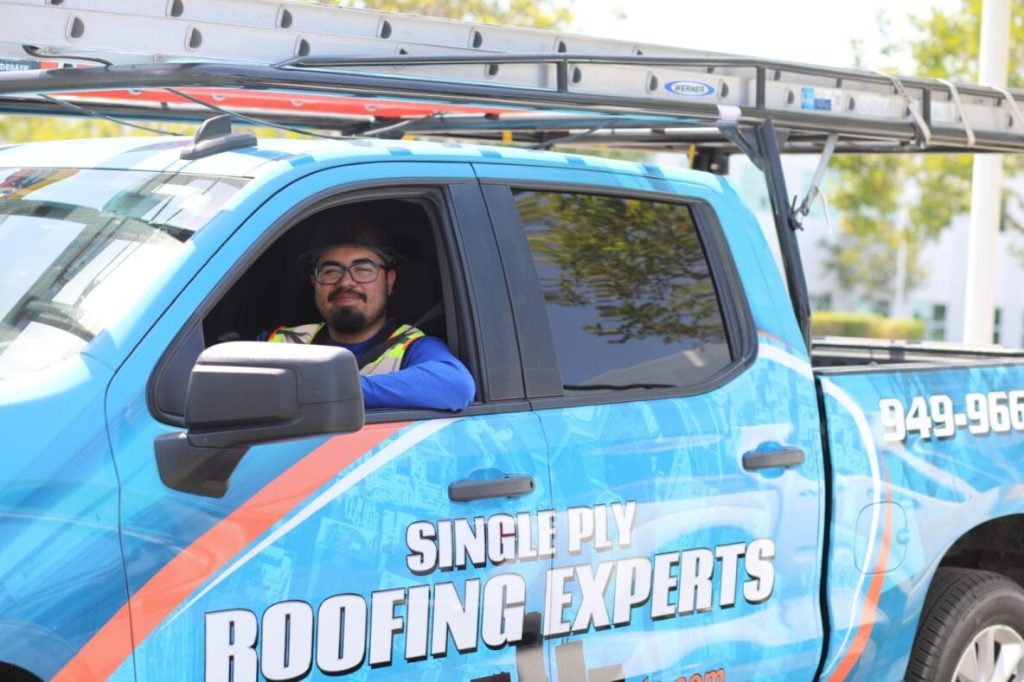
7. Professional Roof Inspections
While DIY inspections are essential, having a professional perform a detailed roof inspection can catch underlying issues you might miss. A professional roofer will:
- Assess Roof Integrity: Identify any structural issues that need attention.
- Recommend Repairs: Provide recommendations for any necessary repairs or replacements.
- Extend Roof Life: A professional inspection ensures that your roof remains in good condition and prolongs its lifespan.
Make sure to schedule a professional inspection as part of your commercial roof maintenance programs, ideally once a year or after severe weather conditions.
8. Repair and Maintenance Scheduling
To stay ahead of potential issues, create a schedule for roof inspections, maintenance, and repairs. This helps you stay proactive and ensures that repairs are done promptly. Here’s how to organize your maintenance schedule:
- Track Inspections and Repairs: Keep a detailed record of inspections, repairs, and maintenance activities.
- Plan for Seasonal Maintenance: Schedule maintenance tasks for spring and fall to prepare for changes in weather conditions.
- Prioritize Immediate Repairs: Address any serious issues right away to prevent further damage.
Frequently Asked Questions (FAQs)
WHAT IS COMMERCIAL ROOF MAINTENANCE?
Commercial roof maintenance refers to the routine inspections, cleaning, and repairs required to ensure the longevity and effectiveness of a commercial building’s roof. This includes tasks such as inspecting for damage, cleaning gutters, checking seals, and repairing flashing.
WHAT IS INCLUDED IN ROOF MAINTENANCE?
Roof maintenance typically includes visual inspections, cleaning of gutters and drains, checking for roof membrane damage, inspecting flashings, and ensuring proper insulation and ventilation. Regular maintenance helps extend the roof’s lifespan and prevent costly repairs.
HOW OFTEN SHOULD COMMERCIAL ROOF MAINTENANCE BE DONE?
A commercial roof maintenance checklist should be followed at least twice a year, but more frequent inspections may be necessary in areas with extreme weather conditions. You should also schedule inspections after storms or heavy rain.
WHAT IS THE DIFFERENCE BETWEEN COMMERCIAL ROOF REPAIR AND MAINTENANCE?
Commercial roof maintenance involves preventive measures to keep the roof in good condition, such as inspections, cleaning, and minor repairs. Commercial roof repair addresses specific issues that arise, such as leaks or structural damage, often after a problem has been detected.
HOW CAN I CREATE A COMMERCIAL ROOF MAINTENANCE PLAN?
To create an effective commercial roof maintenance plan, start by establishing a routine inspection schedule, cleaning gutters regularly, checking for damage, and scheduling professional roof inspections. Include preventive maintenance tasks in your commercial roof maintenance programs to ensure long-term roof health.
Conclusion
Regular commercial roof maintenance is essential for protecting your building and avoiding expensive repairs. By following this comprehensive commercial roof maintenance checklist, you can prevent damage, improve energy efficiency, and extend the lifespan of your roof. Don’t wait for a major issue to arise—implement a solid commercial roof maintenance plan today.
For expert guidance and reliable roof maintenance, trust the professionals at Single Ply Roofing Experts. We specialize in commercial roof repair and preventative maintenance programs tailored to your specific needs. Contact us today for a consultation or to schedule an inspection.
